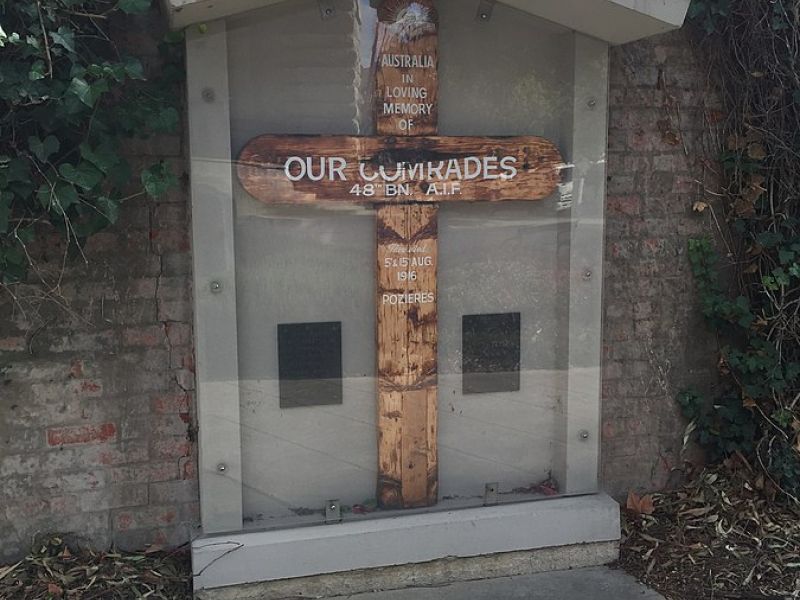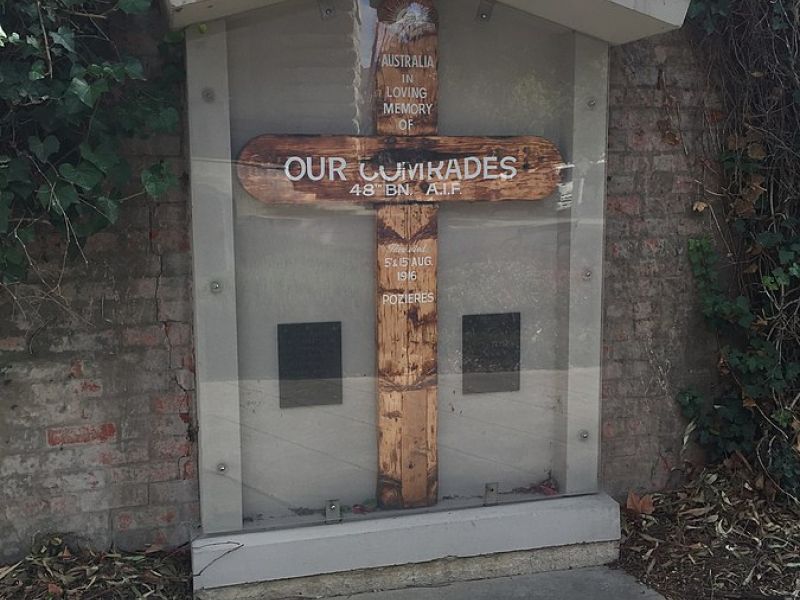Chipped and broken by shot, they bear the marks of their wartime experience.
5,000 people were present in 1938 when the crosses, set in niches in the Government House wall at the rear of the memorial, were unveiled and the official wreaths laid. Members of the public filed past the shrines. Many laid flowers and wreaths.
"Not only those who mourn these men but all who love their memory will always think of their great sacrifice and will pray that we may be worthy of them," said the Governor, after he had drawn the Union Jacks aside from the shrines.
"Crosses such as these were elected to the fallen by their comrades immediately after the fighting. As time went on, the old wooden crosses were replaced by headstones, and the bodies of those who fell are gathered in carefully tended cemeteries on the battlefields. The cemeteries are gardens of peace."
The shrines are built after a pattern familiar to soldiers on the country roads in France. The wooden crosses, seasoned by exposure to the weather, are inscribed to the officers and men of their battalions. Chipped and broken by shot, they bear the marks of their wartime experience.

 Faithe Jones
Faithe Jones